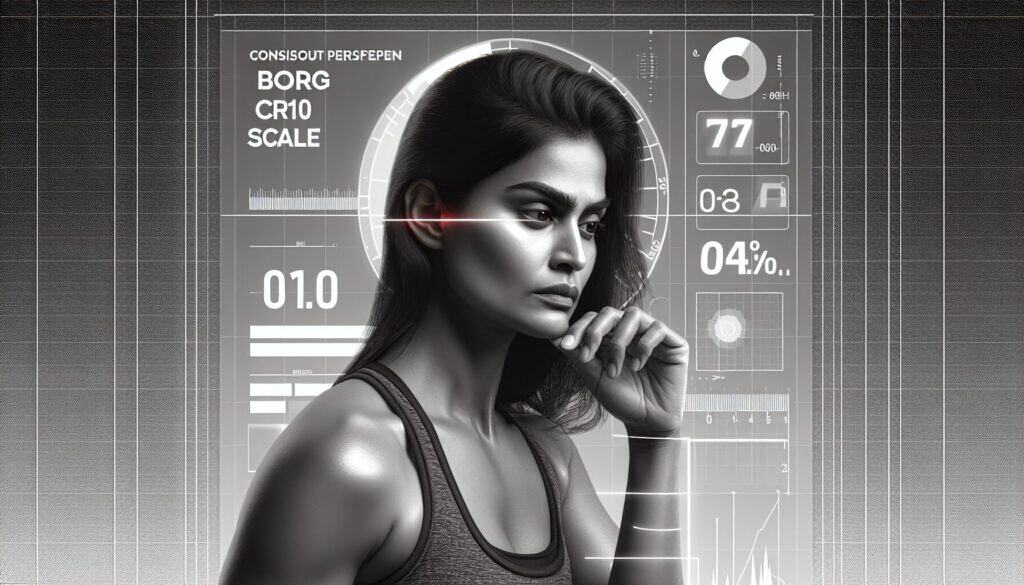A subjective scale used to measure an individual’s perception of the intensity of physical exertion, effort, or fatigue.
- Methodologies: Customers & Marketing, Economics
BORG CR10 Scale (Rate of Perceived Exertion)

BORG CR10 Scale (Rate of Perceived Exertion)
- Continuous Improvement, Ergonomics, Human Factors, Human-Centered Design, Performance Tracking, Process Improvement, Quality Management, Usability, User experience (UX)
Objective:
How it’s used:
- Individuals rate their perceived exertion on a scale typically ranging from 0 (No exertion at all) to 10 (Maximal exertion), often with verbal anchors at different points.
Pros
- Simple and quick to administer; provides a subjective measure of physical strain that can complement objective measures; widely used in ergonomics and exercise physiology.
Cons
- Subjective, so ratings can vary between individuals and be influenced by psychological factors; requires clear instructions for consistent use; not a direct measure of physiological load.
Categories:
- Ergonomics
Best for:
- Quantifying an individual's subjective perception of physical effort during a task.
The BORG CR10 Scale, widely employed in various fields such as sports science, rehabilitation, and occupational health, serves as an effective tool for assessing perceived exertion levels during physical tasks, allowing designers and engineers to create more human-centered products and systems. In industries like fitness and ergonomics, this methodology can be utilized to evaluate equipment design or work environments by collecting subjective feedback from users about their physical strain while using certain tools or executing specific tasks. This approach is particularly beneficial in phases of iterative design when testing prototypes, as it allows users to provide immediate impressions of how physically taxing a design may be. Stakeholders like product developers, user experience researchers, and health professionals typically engage in this process, using participants from diverse demographics to gather comprehensive data that reflects varied interpretations of effort, thereby enhancing product usability and comfort. The scale proves valuable even in educational contexts, where instructors can measure students’ exertion levels during physical activities, facilitating the creation of tailored curriculums that respect individual capabilities and improve engagement. Such applications reflect an integration of subjective assessments with physical activity guidelines, thereby optimizing safety and performance in diverse environments.
Key steps of this methodology
- Instruct the individual to perform a specific physical task or exercise.
- At the end of the task, ask the individual to rate their perceived exertion using the Borg CR10 scale.
- Ensure the individual understands the scale definitions and points for accurate rating.
- Record the given rating for further analysis.
- Encourage the individual to reflect on their feelings of exertion in relation to past experiences.
Pro Tips
- Utilize the BORG CR10 Scale in combination with real-time biometric data to cross-validate perceived effort versus actual physiological response for improved accuracy in task analysis.
- Implement iterative testing with the BORG CR10 Scale in design prototypes to refine ergonomic features based on user feedback and subjective exertion levels during typical use scenarios.
- Incorporate training sessions that familiarize participants with the BORG CR10 Scale for standardization, ensuring consistent data collection across varying user demographics and settings.
To read and compare several methodologies, we recommend the
> Extensive Methodologies Repository <
together with the 400+ other methodologies.
Your comments on this methodology or additional info are welcome on the comment section below ↓ , so as any engineering-related ideas or links.
Historical Context
1949
1950
1950
1960
1960
1960
1960
1940
1950
1950
1958
1960
1960
1960
1960
(if date is unknown or not relevant, e.g. "fluid mechanics", a rounded estimation of its notable emergence is provided)















Related Posts
Musculoskeletal Discomfort Questionnaires
Multivariate Testing (MVT)
Multiple Regression Analysis
Motion Capture Systems
MoSCoW Method
Mood’s Median Test